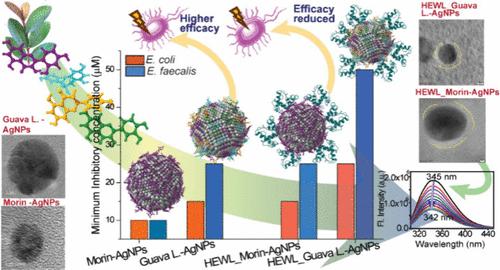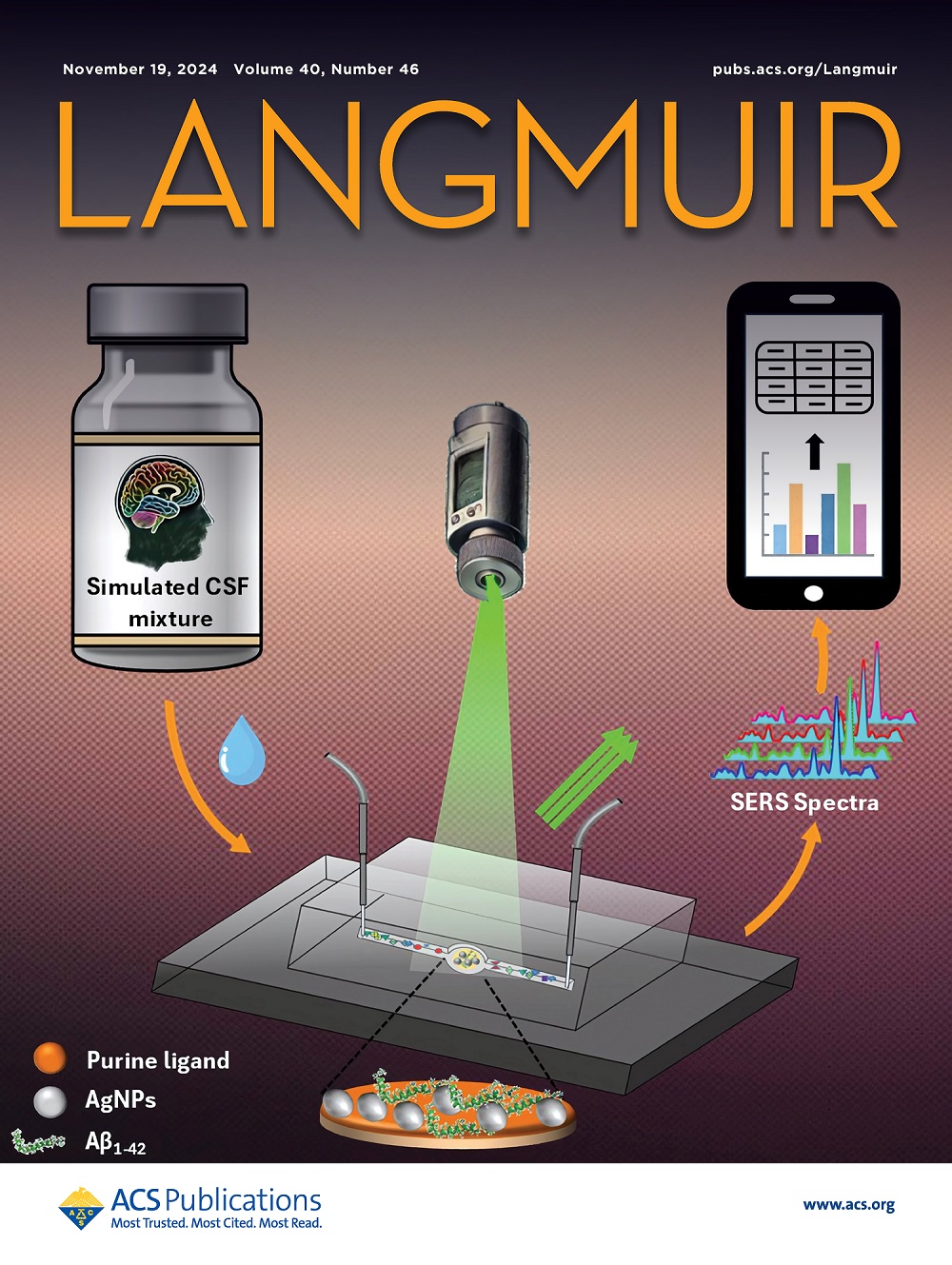Fundamental Understanding of Bio-Nano Interface of Lysozyme on Psidium guajava Polyphenol Coated Silver Nanoparticles: Mechanistic Insights into the Effect of Protein Corona on the Antibacterial Efficacy
IF 3.7
2区 化学
Q2 CHEMISTRY, MULTIDISCIPLINARY
引用次数: 0
Abstract
Recent times have witnessed revolutionary progress in the design and development of functionalized nanomaterials as promising tools for biomedicinal applications. However, the gap in the fundamental understanding of the “biological responses” of the nanomaterials after the formation of “protein-corona” when it is exposed to the body system has drawn a thin line from its discoveries to real clinical trial. In this article we have synthesized two different silver NPs capped with the polyphenols of Psidium guajava (guava) leaf extract and the other with one of its major polyphenolic groups, morin. Then, the formation of “bio-nano interface” of these synthesized AgNPs were illustrated in detail by taking the model carrier protein hen egg white lysozyme (HEWL). The formation of protein corona of HEWL on the surface of the AgNPs was revealed by the increase in the hydrodynamic size and the negative ξ-potential values as well as from the visualization of an ∼1 nm thick light gray layer of HEWL in the TEM micrographs. The binding interaction of surface adsorbed HEWL with the AgNPs was analyzed with various photophysical and molecular dynamics simulation (MD) techniques. HEWL interacted with these polyphenol-assisted AgNPs with moderate binding affinity (Kb ∼ 104 M–1) in a spontaneous manner with the structural integrity in its native conformation. Though several covalent forces are responsible for protein–NP interaction, electrostatic and hydrophobic forces of attraction played the major role in the complexation of HEWL with Guava L.-AgNPs and Morin-AgNPs, respectively. The lysozyme protein-corona on the synthesized polyphenol-assisted AgNPs altered their biological response as revealed from the reduction of antibacterial activity against pathological Gram-positive (E. faecalis) as well as Gram-negative (E. coli) bacterial strains in vitro.

瓜石榴多酚包被银纳米粒子上溶菌酶生物纳米界面的基本认识:蛋白质电晕对抗菌效果影响的机理研究
近年来,功能化纳米材料的设计和开发取得了革命性的进展,成为生物医学应用的有前途的工具。然而,由于对纳米材料暴露于人体系统后形成“蛋白冠”后的“生物反应”的基本认识存在差距,从其发现到真正的临床试验之间划了一条细线。本文合成了两种不同的银NPs,分别以番石榴叶提取物的多酚覆盖,另一种以番石榴叶提取物的主要多酚基团之一桑辣素覆盖。然后,以蛋清溶菌酶(HEWL)为模型载体蛋白,详细说明了这些合成的AgNPs“生物纳米界面”的形成。通过水动力尺寸和负的ξ电位值的增加以及TEM显微图中可见的~ 1 nm厚的浅灰色hel层,揭示了AgNPs表面hel蛋白电晕的形成。利用各种光物理和分子动力学模拟(MD)技术分析了表面吸附的hel与AgNPs的结合相互作用。HEWL与这些多酚辅助AgNPs具有中等结合亲和力(Kb ~ 104 M-1),以自发方式相互作用,其结构完整性保持在其天然构象中。虽然几种共价力负责蛋白质- np相互作用,但静电和疏水引力分别在hp与番石榴L.-AgNPs和Morin-AgNPs的络合中起主要作用。合成的多酚辅助AgNPs上的溶菌酶蛋白冠改变了它们的生物学反应,从体外对病理性革兰氏阳性(E. faecalis)和革兰氏阴性(E. coli)菌株的抗菌活性降低中发现。
本文章由计算机程序翻译,如有差异,请以英文原文为准。
求助全文
约1分钟内获得全文
求助全文
来源期刊

Langmuir
化学-材料科学:综合
CiteScore
6.50
自引率
10.30%
发文量
1464
审稿时长
2.1 months
期刊介绍:
Langmuir is an interdisciplinary journal publishing articles in the following subject categories:
Colloids: surfactants and self-assembly, dispersions, emulsions, foams
Interfaces: adsorption, reactions, films, forces
Biological Interfaces: biocolloids, biomolecular and biomimetic materials
Materials: nano- and mesostructured materials, polymers, gels, liquid crystals
Electrochemistry: interfacial charge transfer, charge transport, electrocatalysis, electrokinetic phenomena, bioelectrochemistry
Devices and Applications: sensors, fluidics, patterning, catalysis, photonic crystals
However, when high-impact, original work is submitted that does not fit within the above categories, decisions to accept or decline such papers will be based on one criteria: What Would Irving Do?
Langmuir ranks #2 in citations out of 136 journals in the category of Physical Chemistry with 113,157 total citations. The journal received an Impact Factor of 4.384*.
This journal is also indexed in the categories of Materials Science (ranked #1) and Multidisciplinary Chemistry (ranked #5).
 求助内容:
求助内容: 应助结果提醒方式:
应助结果提醒方式:


